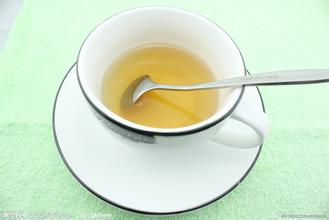Ethiopian Coffee Bean Story Coffee taboo Historical characteristics Flavor description treatment
Introduction to the flavor description of Ethiopian coffee beans
Getachew Mengistie, director of Ethiopia's Bureau of intellectual property, bluntly pointed out that farmers sell raw beans for $1.45 a pound, while Starbucks sells for $26 a pound in the United States, 18 times the price difference between the two places. The reason is that Ethiopia does not know how to use intellectual property rights to create value for farmers. As long as it has the name of Ethiopian boutique beans, it can be marketed in the United States at three times the price of ordinary commercial beans. You know, investing in baking, packaging and marketing equipment through downstream channels in the United States alone cannot create such a huge added value, because most of the value comes from the coffee producing area (if Starbucks is not branded as "Sidamo", you can't sell it at such a high price. He stressed: "Ethiopia is the birthplace of coffee, and the famous producing areas of course have huge marketing value, but they are ignored by farmers. As a result, excess profits are finally earned by countries that know how to use the prestige of the place of origin to create value. It took no effort to earn it!
Ethiopia finally woke up and decided to learn from the skills of Western developed countries in mastering brands and creating value for the benefit of hard-working farmers, so in March 2005, Ethiopia applied to the United States Patent and Trademark Administration for the trademark rights of three famous places of origin, namely, Sidamo, Yega Xuefei and Harald. In the future, when American manufacturers sell high-quality coffee in these three places, they must be authorized by Ethiopia before they can put up the name of origin, so that hard-working farmers can get a more reasonable reward.
Oxfam estimates that once Ethiopia acquires the trademark rights of these three places of origin, it will increase Ethiopia's revenue by US $88 million a year. However, Starbucks challenged the US Trademark Office because Starbucks first applied for Sidamo as a trademark as early as two ○○ four years ago, and although the case is still under review, the first applicant has the upper hand. The Ethiopian ambassador to the United States negotiated with Starbucks and received a response: "Please talk to our lawyer directly." However, in ○○ six years, the United States Trademark Office approved Ethiopia to own the trademark "Yega Xuefei", while the names of the two producing areas, Sidamo and Harald, are still under consideration. Starbucks hired a large team of lawyers to step up defense firepower in an attempt to prevent Ethiopia from taking control of trademarks in two other producing areas.
In November 2006, the newly appointed senior deputy general manager of Starbucks du Hei (Dub Hay, the so-called "big shot" who visited Yunnan, China last year) even published a film on "You Tube", openly calling out to Ethiopia, criticizing the trademark application of place names as illegal, and suggesting that the authorities of the country should change to the origin certification system, such as the Blue Mountains of Jamaica and Kona Coffee of Hawaii. There is also protection for consumers. The film attracted tens of thousands of views in a month, but angered the US media and humanitarian groups, saying that Starbucks was ugly. Roberta Hutton, a lawyer representing Ethiopia, said: "Duhei is talking nonsense. Ethiopia's move is aimed at protecting valuable goods and consolidating due intellectual property rights." Ethiopia is just adopting Starbucks' trademark protection strategy. Why do others have to make it difficult for others to do so? "

Important Notice :
前街咖啡 FrontStreet Coffee has moved to new addredd:
FrontStreet Coffee Address: 315,Donghua East Road,GuangZhou
Tel:020 38364473
- Prev

Flavor and taste characteristics of Katim coffee beans in Yunnan Province, China
The Manor of Manzhongtian Village, Simao District, Pu'er City, located in the golden zone of coffee cultivation in the world, has a latitude, altitude, planting conditions and climate similar to that of the Blue Mountains in Jamaica. This God-given plateau rain forest along the Lancang River is shrouded in clouds all the year round, and has been adhering to sustainable ecological development and rain for 30 years.
- Next

Introduction to the variety treatment method for describing the flavor of Matari mocha coffee, the taste characteristics of grinding degree
Yemeni boutique coffee bean flavor description introduces Matari mocha-the best of mocha coffee, like top red wine, rich tropical fruit flavor, infatuated, rich and diverse flavor with unique sunshine flavor, fine tasting, can also feel a hint of chocolate sweetness in the final rhyme, the taste is strong worthy of careful taste. Product name: Matalimo, Yemen
Related
- Detailed explanation of Jadeite planting Land in Panamanian Jadeite Manor introduction to the grading system of Jadeite competitive bidding, Red bid, Green bid and Rose Summer
- Story of Coffee planting in Brenka region of Costa Rica Stonehenge Manor anaerobic heavy honey treatment of flavor mouth
- What's on the barrel of Blue Mountain Coffee beans?
- Can American coffee also pull flowers? How to use hot American style to pull out a good-looking pattern?
- Can you make a cold extract with coffee beans? What is the right proportion for cold-extracted coffee formula?
- Indonesian PWN Gold Mandrine Coffee Origin Features Flavor How to Chong? Mandolin coffee is American.
- A brief introduction to the flavor characteristics of Brazilian yellow bourbon coffee beans
- What is the effect of different water quality on the flavor of cold-extracted coffee? What kind of water is best for brewing coffee?
- Why do you think of Rose Summer whenever you mention Panamanian coffee?
- Introduction to the characteristics of authentic blue mountain coffee bean producing areas? What is the CIB Coffee Authority in Jamaica?

